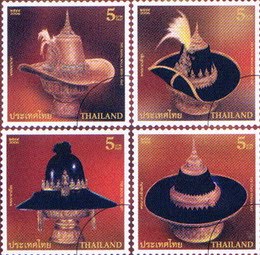Postage Stamps Articles : The History of United States Postage Stamps by Mike Selvon
With the largest motorized fleet in the US, the postal service has come a long way since the meager pony express. Collectors of colonial stamps are generally handsomely rewarded for their hawk's eye, as some of these stamps can go for $2 to $3 Million new! Read on to learn more about the fascinating history of United States postage stamps.
While the pony express had been delivering letters for over fifty years, the first American postal service was formally granted by King William and Queen Mary in 1692. The American Revolution was fought to ensure that there was "no taxation without representation," thus paving the way for US postage stamps.
Benjamin Franklin was one of the first postmasters and created the United States Postal Service as we know it, in Philadelphia 1775. Early postal symbols ranged from the Roman god Mercury to a running pony to the modern day eagle.
Some of the most coveted United States postage stamps are the crude provisional stamps used by early postmasters from 1845 to 1846 before the Stamp Act was legislated. Many postmasters charged whatever they felt like and the quality is naturally poor on these old relics. Nevertheless, keep an eye out for provisional stamps from Providence, RI, Alexandria, VA, or even Baltimore, MD (featuring the signature of James Buchanan, before he became president). An unused 1846 Millbury Massachusetts featuring George Washington recently sold for $130,000!
The 5-cent red brown Benjamin Franklin was the first of the official ones for sale in New York City and Boston. The second was the 10-cent black George Washington (which currently sells for around $1,400 used and $28,000 unused)!
Stamp values decreased over the next few years and remained stable for nearly a century. Blue 1-cent Ben Franklins became a collector favorite when production errors led to new, noticeable plate variations in the prints. These innovative stamps can range from $100 to $200,000 in collection circles.
The Civil War had the North issuing 1,750,000,000 copies of the rose-colored 3¢ United States postage stamps, which have survived to present day and sell for $2-$3 a piece. However, certain accidental variations (found in "pigeon blood pink") can sell for $3,000 and up. During the Civil War, Southern towns put out some of their own crude stamps (like Athens, Georgia or Jetersville, Virginia or Knoxville, Tennessee -- to name a few). Confederate "Rebel" provisional stamps can go for $1,000 to $15,000 these days.
From the 1860s - 1870s, ten styles of "grills" were designed to emboss used ones and combat illegal stamp reuse. One cent "Z-Grill" US postage stamps from 1868 recently sold for $935,000 to stamp dealers. Later, one of the Z-Grills was traded for a block of Inverted Jenny stamps (worth $3 million).
In 1893, to commemorate the 400th anniversary of Christopher Columbus's landing in the America, they were issued, depicting some of Columbus's high seas adventures, some for as much as $5 (which was a LOT in 1893!). Today, these colorful collectibles sell for $1,500 to $12,500, depending on the condition.
Generally, the ones issued after 1900 aren't worth a whole lot on the market yet. However, during the Great Depression, most people could no longer spend their money on stamps and less than 8% of those issued during that time were sold, so they remain the smallest U.S. issue of the 20th century.
Today, the post office faces many challenges, from the widespread use of the internet and cell phones to send messages, as well as competition from Fed Ex and UPS. However, the stamp collecting market is not likely to disappear. There are so many people who appreciate the art and history behind these little artifacts that there will always be someone looking for postage stamps, notably United States postage stamps.
About the Author
Mike Selvon has some great stamp collecting articles for the hobbist, where you can find out more tips on the United States postage stamps. We appreciate your feedback at our stamp collecting values blog.
Source: http://www.goarticles.com/cgi-bin/showa.cgi?C=706502
Browse » Home » » The History of United States Postage Stamps
15 March 2008
The History of United States Postage Stamps
Subscribe to:
Post Comments (Atom)
ไปรษณียากรไทย แสมป์ไทย ล่าสุด
แสตมป์ไทย แบบต่าง ๆ
- แสตมป์ 100 ปี พุทธทาส
- แสตมป์กรุงเทพฯ เมืองแฟชั่น
- แสตมป์กล้วยไม้
- แสตมป์การเขียนจดหมาย
- แสตมป์ความร่วมมือไทย - สวีเดน
- แสตมป์ความร่วมมือไทย - อิตาลี
- แสตมป์คุณทองแดง
- แสตมป์งานกาชาด
- แสตมป์ชีวิตใต้ทะเล
- แสตมป์ชุดปีใหม่
- แสตมป์ดอกกุหลาบ
- แสตมป์ที่ระลึก
- แสตมป์ที่ระลึก 100 ปี สยามสมาคมในพระบรมราชูปถัมภ์
- แสตมป์ที่ระลึก 30ปี ความสัมพันธ์ทางการทูตไทย-จีน
- แสตมป์ที่ระลึกงานแสดงตราไปรษณียากรแห่งชาติ
- แสตมป์นักษัตรประจำปี
- แสตมป์พระราชวัง
- แสตมป์พระเครื่อง
- แสตมป์วันพุทธศาสนา
- แสตมป์วันสงกรานต์
- แสตมป์วันสำคัญทางพุทธศาสนา
- แสตมป์วันสื่อสารแห่งชาติ
- แสตมป์วันเด็ก
- แสตมป์อนุรักษ์มรดกไทย
- แสตมป์เรือพระที่นั่ง
แสตมป์ไทย อดีต-ปัจจุบัน
คนคิดแปลก มองมุมต่าง
Copyright © 2009 แสตมป์ไทย | Fresh Themes Gallery | NdyTeeN. All Rights Reserved. Powered by Blogger and Distributed by Blogtemplate4u .


COMMENTS :
0 comments to “The History of United States Postage Stamps”
Post a Comment